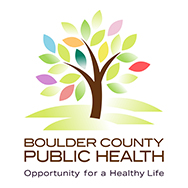Understanding Water Quality: Onsite Wastewater Treatment Systems
Leaks & Water Waste
It’s not the little leak that wastes water — it’s the little leak that keeps on leaking that wastes water. The fact that the leak is so little, may also mean that you ignore it.
So, how can a little leak turn into a big waste? Many of our toilets have a constant leak — somewhere around 22 gallons per day. This translates into about 8,000 gallons of wasted water annually, which could be saved. Think of a leaky water line coming into your house. If it leaks 1 gallon of water every 10 minutes, that means that you are losing (and paying for) 144 gallons per day, or 52,560 gallons per year. The leak can also lead to failure of the OWTS because the system is overloaded.
Watershed Definition
A watershed is simply the land that water flows across or through on its way to a common stream, river, or lake. A watershed can be extensive (e.g., draining thousands of square miles to a major river, lake, or ocean) or very small, such as a 20-acre watershed that drains to a pond.
Checking Your Water Quality
If you are on a community water system, your municipality or water district should be able to answer your questions. Community water supply systems perform regular tests and will provide reports on request.
Private testing laboratories are also available and listed in the telephone book under laboratories. The Colorado Department of Public Health and Environment’s laboratory phone number is (303) 692-3500. The Environmental Protection Agency’s Safe Drinking Water Hot Line is 1-800-426-4791.
Well Water Health Concerns
As the well owner, you are responsible for assuring that your water is safe to drink. Basically, the water should be free from organisms that can cause illness. These organisms include bacteria, protozoa, viruses, and helminths (worms).
Diseases that are transmitted by water can cause anything from an upset stomach to more severe and long-term health problems. Examples of some serious diseases include typhoid fever, salmonellosis, giardia, infectious hepatitis, and others.
Learn More about Waterborne Disease
Chemical Contamination
Chemical contamination should also be a concern. For example, the amount of nitrate in the water should be a concern if you live in an agricultural area, near animal feed lots, or in other places where fertilizers are used. Nitrate levels exceeding 10 milligrams per liter can cause methemoglobinemia, commonly known as blue baby syndrome, in infants under one-year-old. Adverse long-term health effects associated with consuming nitrates also exist.
Testing Frequency
You should test for coliform bacteria, pH, and total dissolved solids at least once each year. These tests should be conducted in the spring or summer after a rainy period.
Coliform bacteria tests should also be conducted after replacing pipes or after installing a new pump. Tests should also be undertaken if water quality changes in color, odor, taste, etc., where or what you live next to can affect your water quality. If someone in your family becomes ill or the taste, odor, or color of your water changes, your supply may be contaminated.
You should test for nitrates, sulfate, chloride, fluoride, iron, manganese, hardness, and corrosion index every three years if your home plumbing contains lead material or brass fittings, test for the presence of lead.
Below is a list of situations that deserve attention:


